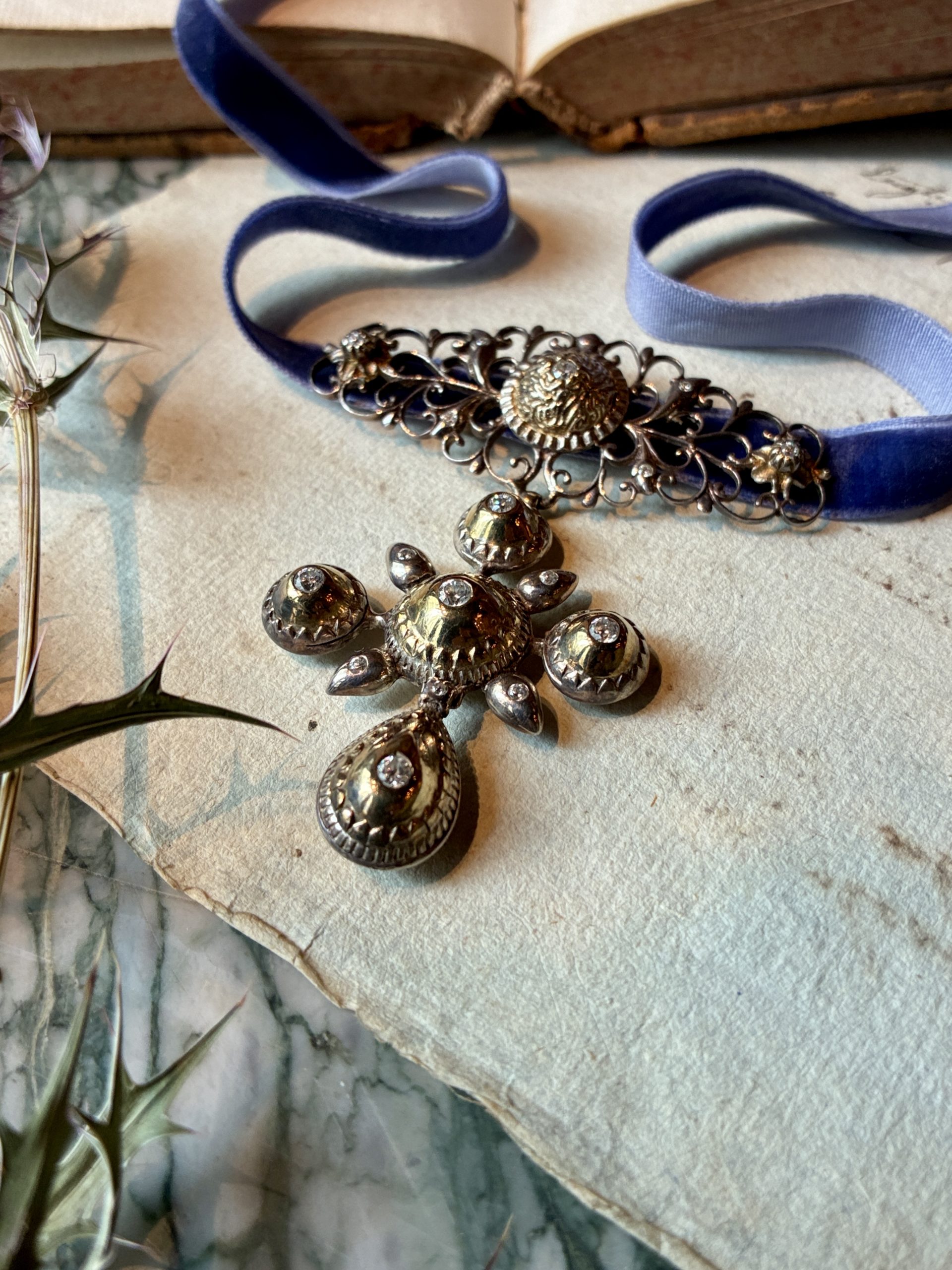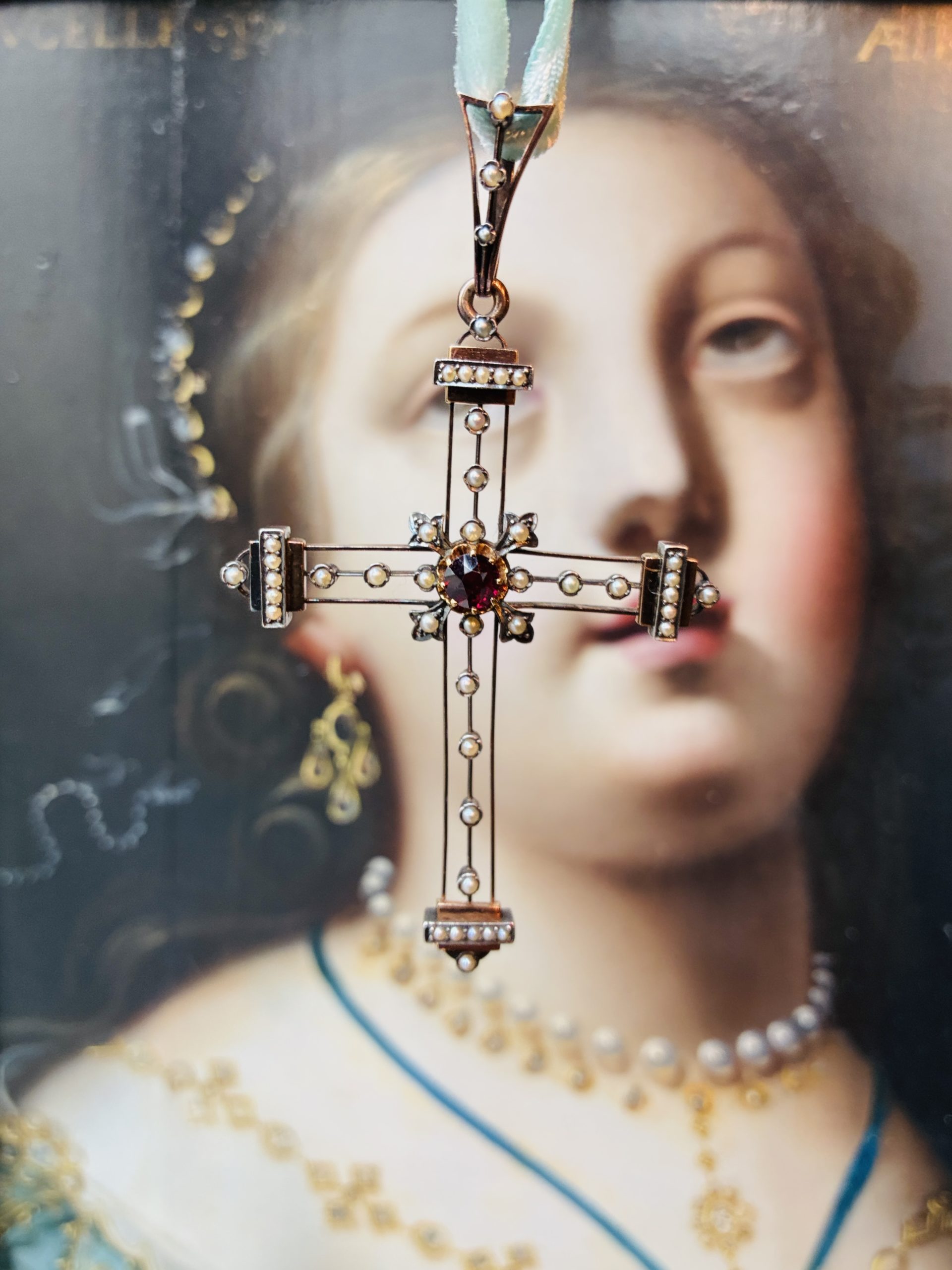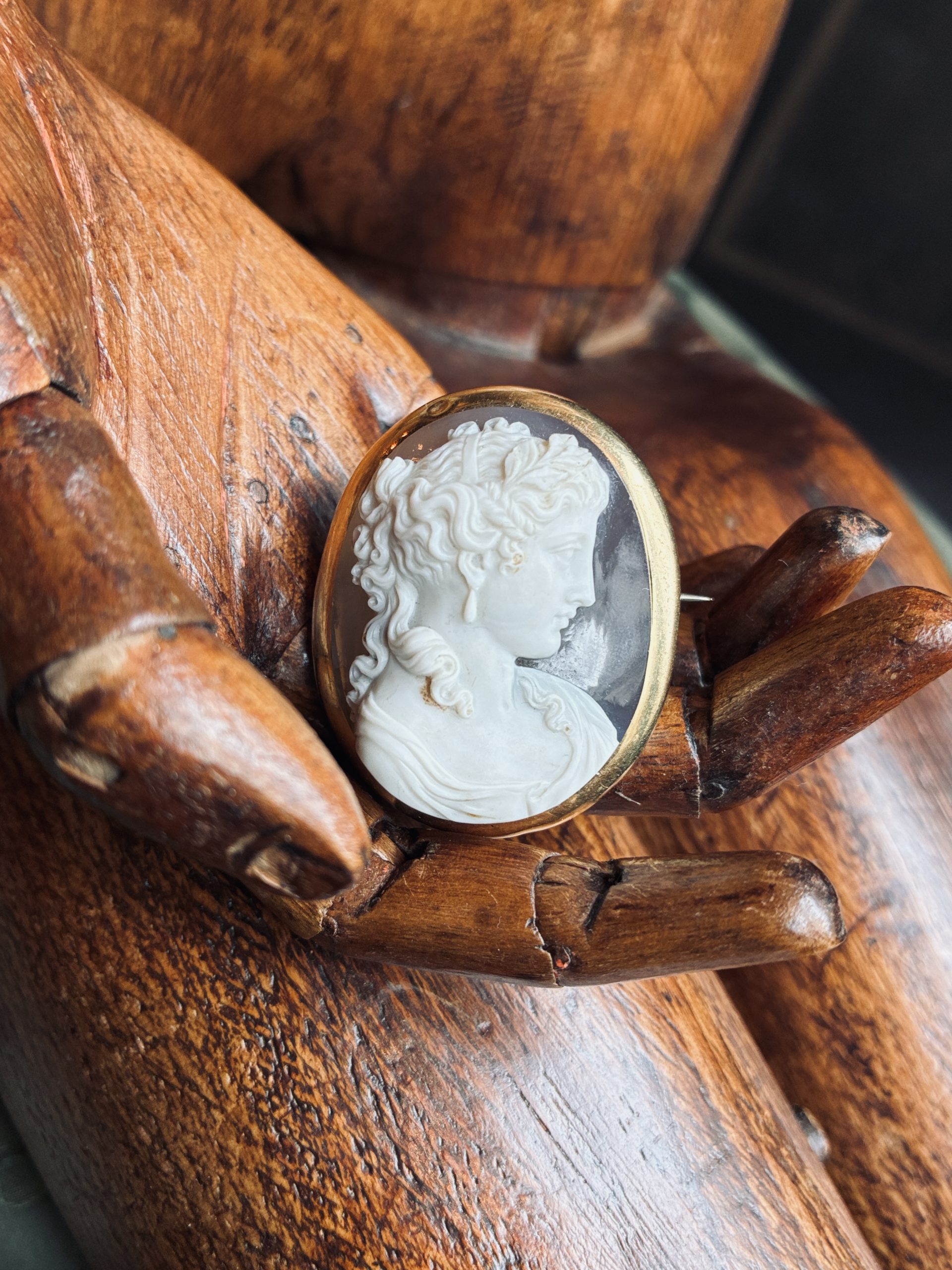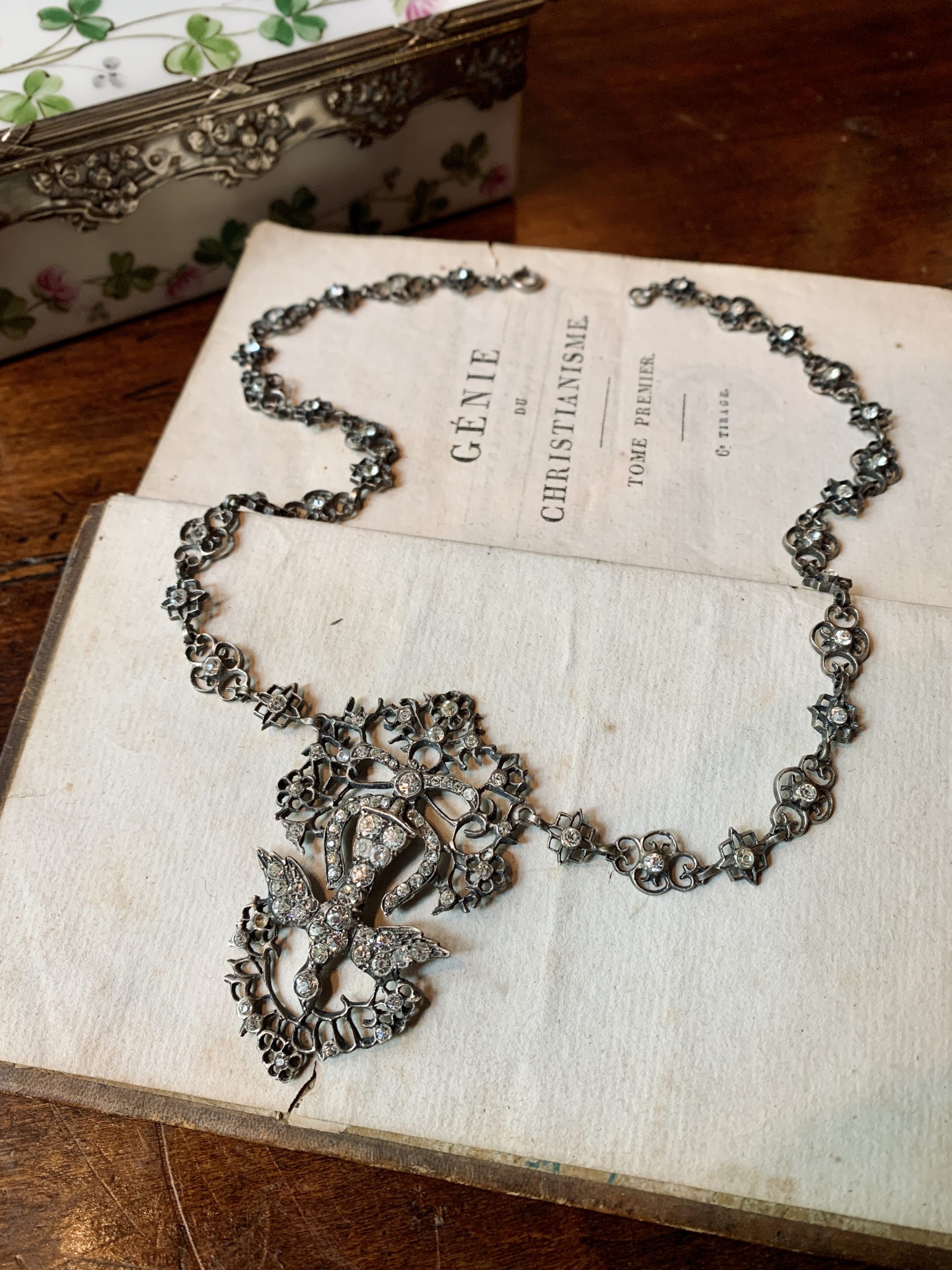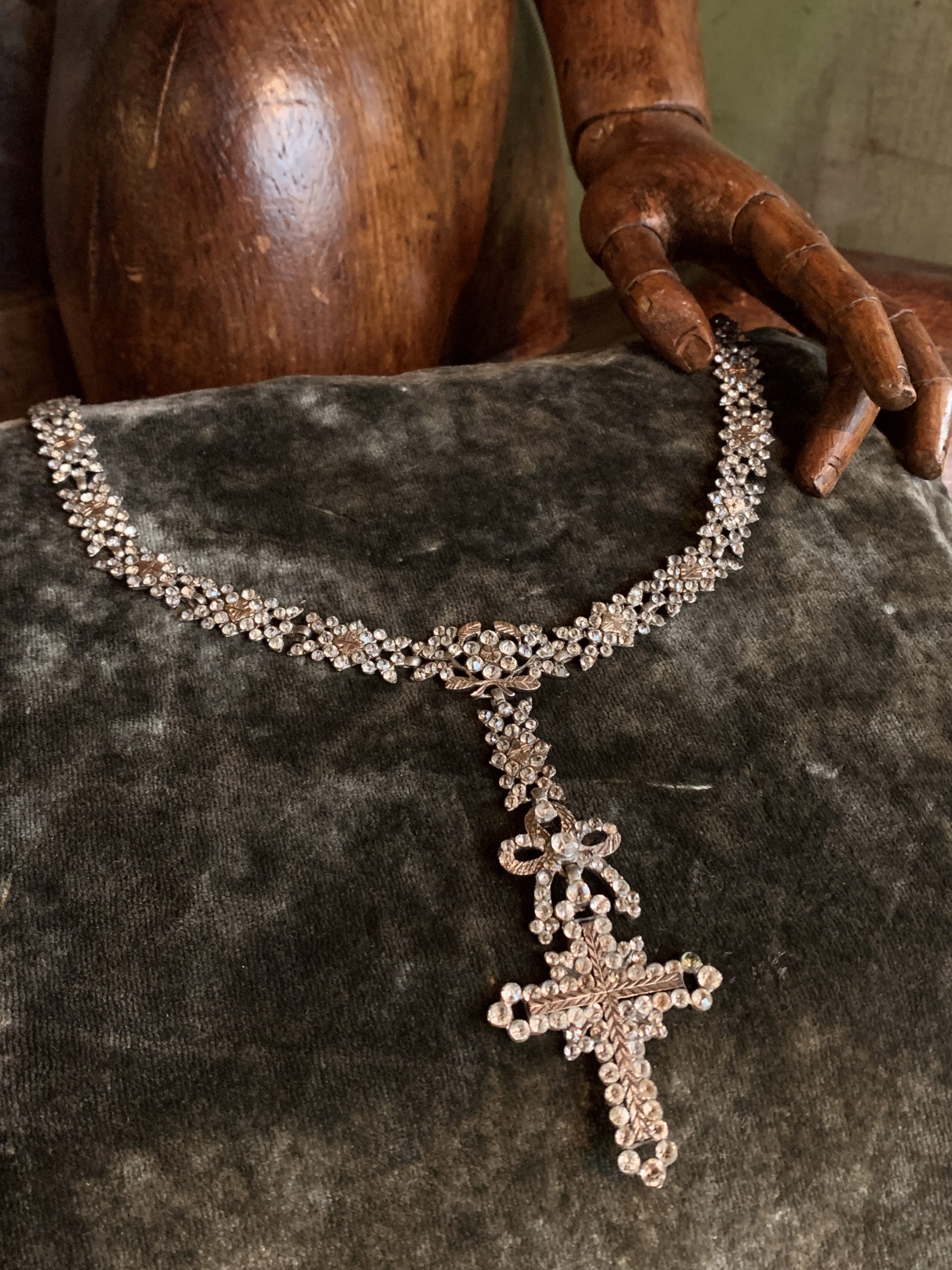This type of cross, known as a Badine, Badino, or butterfly cross, has a distinctive removable lower section, which literally refers to the word that defines it: badino, in Provençal, means free-moving or fluttering. The lower section has a beautifully openwork loop on which three rosettes are arranged.
Pendant in the shape of an openwork cross in silver and rose gold, punctuated with small pearls. In the center is a red stone, most likely a garnet.
Late 19th century
Height: 8 cm
Gross weight: 11.7 g
Oval brooch with cameo depicting a young woman looking to the right. Very fine sculptural work on the wavy hair.
19th century
Height: 4.5 cm
Width: 3.5 cm
This Art Deco cross is crafted from 18-karat white gold and set with diamonds.
Typical of the 1920s–1930s, it possesses a refined and timeless style.
France, 20th century
Fine cross pendant in white gold (750%) set with twelve brilliant-cut diamonds.
18k gold cross with enamel and rose-cut diamonds, engraved with the vintage motifs.
Total gross weight: 6.10 grams
First half of the 19th century
Provence, France
Yvetot necklace with Holy Spirit in silver and vermeil with Rhine stones.
Normandy, France
Early 19th century
Set in yellow gold composed of a barrette brooch decorated in a bezel setting on a paillon with 5 rose-cut garnets and a cross in yellow gold decorated in a bezel setting on a paillon rose-cut garnets.
Holy Spirit brooch and pendant in silver and Rhine stones
Normandy, France
18th century
Height: 8cm
Yvetot necklace in silver and vermeil with Rhine stones, cross-shaped pendant.
Early 19th century
Normandy, France

